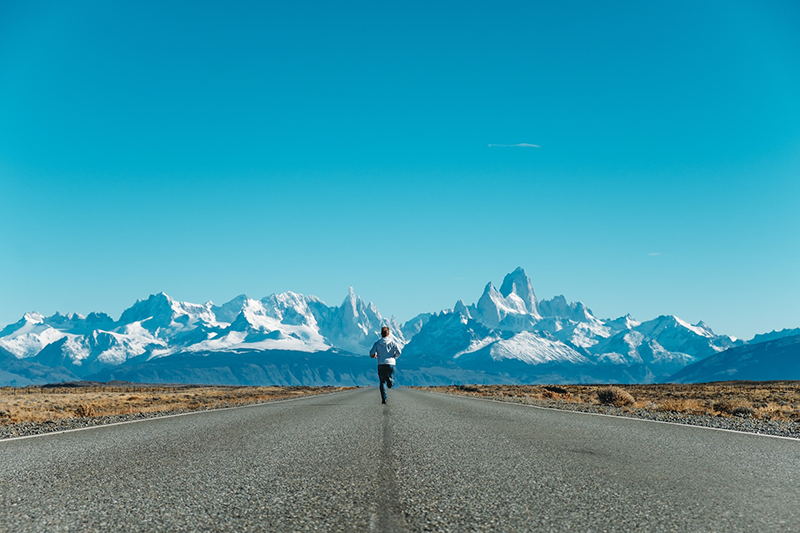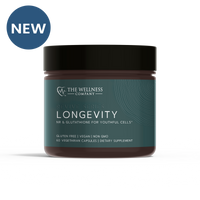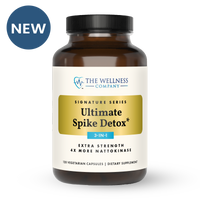Is Running Bad for Your Knees?

Recreational runners often hear the following narrative:
“The more you run, the more you’ll wear out your joints,” or “take up jogging, and the cartilage which protects your bones will break down and you’ll need a joint replacement.”
Contrary to popular belief, these widely spread messages, which sound reasonable at first, are in fact unsupported by evidence.
If mechanical stress caused joints to deteriorate, we would expect people who exercise most to have the highest levels of arthritis, and people who don’t exercise and have “preserved” their joints to have the lowest levels.
What Does the Research Say?
Recent research refutes this theory. In fact, the data show that recreational runners have significantly lower rates of knee and hip osteoarthritis than non-runners. In a recent systematic review and meta-analysis [1], researchers found that the overall prevalence of hip and knee osteoarthritis in recreational runners was 3.5%. In non-runners, the rate was 10.2%.
So, is mechanical load good for joints, full stop?
Not so fast.
The researchers also found that elite runners had a high prevalence of hip and knee osteoarthritis (13.3%).
How do we make sense of these results? Why would both elite runners and inactive people have markedly higher rates of arthritis than recreational runners? Is mechanical load good, or bad? It can’t be both, can it?
The Goldilocks Effect
One theory is that when it comes to mechanical stress on a joint, the dose makes the poison. Maybe there’s a “Goldilocks Effect” in which too little or too much load is harmful, and there’s a sweet spot right in the middle where our joints adapt, get stronger, and thrive.
But if it was all a matter of mechanical stress, why would people who don’t run at all experience high rates of arthritis? Wouldn’t their joints be pristine – like a classic car that runs beautifully because it’s been used sparingly?
Beyond Wear and Tear: The Role of Inflammation
Interestingly, the research shows that it’s not just a question of mechanical stress. Despite the narrative of “wear and tear,” arthritis is now understood to be powerfully impacted by metabolic, hormonal, and inflammatory factors [2]. It’s the complex interplay of all these physiological processes, along with mechanical stress, which contributes to disease progression and ultimately pain and disability.
To highlight the importance of looking beyond “wear and tear,” let’s analyze the link between arthritis and obesity. We know obesity increases one’s risk of osteoarthritis, but we don’t conclusively know why.
Many people assume that it’s because the heavier the person, the more mechanical load the joints must bear. This makes intuitive sense, but there’s more to the story. Obese people also exhibit more low-grade systemic inflammation than non-obese people, due to the secretion of pro-inflammatory molecules called adipokines from fat cells. These adipokines have been shown to trigger an inflammatory signaling pathway that leads to deterioration of cartilage on joint surfaces.
Is it the mechanical load, or the inflammation which impairs joint health in obese people?
While that question hasn’t been answered conclusively, it might help explain why recreational runners do better than non-runners when it comes to arthritis.
It's possible that recreational running’s numerous benefits on metabolic health (such as reduced inflammation) play a role in mitigating joint changes associated with osteoarthritis.
The Body is Not a Machine
Here’s the bottom line: our bodies aren’t fragile machines which deteriorate when we use them.
Our bodies are antifragile, meaning they get stronger when stressed appropriately.
As with anything, the dose makes the poison.
If you’re a runner, or you've been meaning to get started, you can rest easy knowing that your running habit is fantastic for not only your joints, but so many other aspects of your health.
Happy jogging!
References
[1] Alentorn-Geli, E., Samuelsson, K., Musahl, V., Green, C. L., Bhandari, M., & Karlsson, J. (2017). The association of recreational and competitive running with hip and knee osteoarthritis: a systematic review and meta-analysis. journal of orthopaedic & sports physical therapy, 47(6), 373-390.
[2] Chen, D. I., Shen, J., Zhao, W., Wang, T., Han, L., Hamilton, J. L., & Im, H. J. (2017). Osteoarthritis: toward a comprehensive understanding of pathological mechanism. Bone research, 5(1), 1-13.














